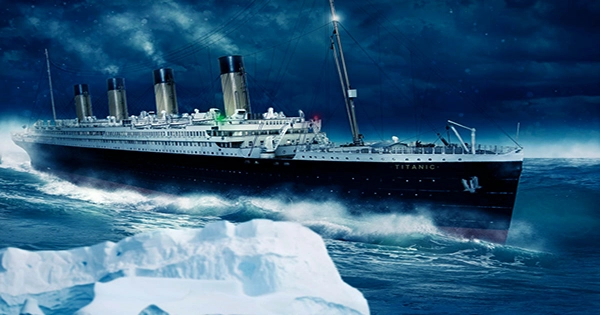The little-known vessel that attempted—and, obviously, failed—to rescue the Titanic from its impending freezing death has been found submerged in the Irish Sea. When the Titanic set sail on its inaugural journey in April 1912, the commerce steamer SS Mesaba was also making its way across the Atlantic.
The SS Mesaba warned Captain Edward Smith of Titanic over the radio that errant icebergs were circling the coast of Newfoundland.
Although the message was understood, the warning finally went unheeded, and we all know how that turned out. Four days into its journey, the “unsinkable” ship hit an iceberg in the North Atlantic Ocean and sank, killing nearly 1,500 passengers.
The SS Mesaba carried on without much attention in the meanwhile. Before being torpedoed by a German U-boat in 1918, the final year of the First World War, it operated as a merchant ship for the following six years. For more than a century, it was unnoticed at the bottom of the sea, until today.
With the aid of the Prince Madog research vessel, which is outfitted with cutting-edge multibeam sonar, scientists at Bangor University in Wales were recently able to locate the Mesaba’s shipwreck and determine where she is believed to have finally rest.
Finding the wreck was a difficult task. In approximately 19,424 square kilometers (7,500 square miles) of seafloor, the Irish Sea is littered with the ruins of 273 ships. Over 100 of those found by the most recent research were probably previously unknown or misdiagnosed.
“In the past, we could only dive to a few places annually to locate wrecks visually. Thanks to the Prince Madog’s exceptional sonar capabilities, we have been able to create a reasonably inexpensive method of studying the wrecks. Dr. Innes McCartney, a naval archaeologist and historian from Bangor University, stated in a statement that we can make the connection between this and the historical data without having to engage in time-consuming physical interaction with each site.
He continued, “It is a ‘game-changer’ for marine archaeology.”
The Titanic’s ruin is still visible on the other side of the Atlantic, 690 kilometers (370 nautical miles) off the Canadian province of Newfoundland. The infamous shipwreck was recently the subject of some of the best-ever deep sea film, thanks to an expedition.
The shipwreck has had better times, as earlier dives have demonstrated. The ship’s forward mast, the poop deck, the crow’s nest, and the gymnasium by the grand staircase have all collapsed since it was discovered in 1985. One worry is that the ship’s bow might be the next.















